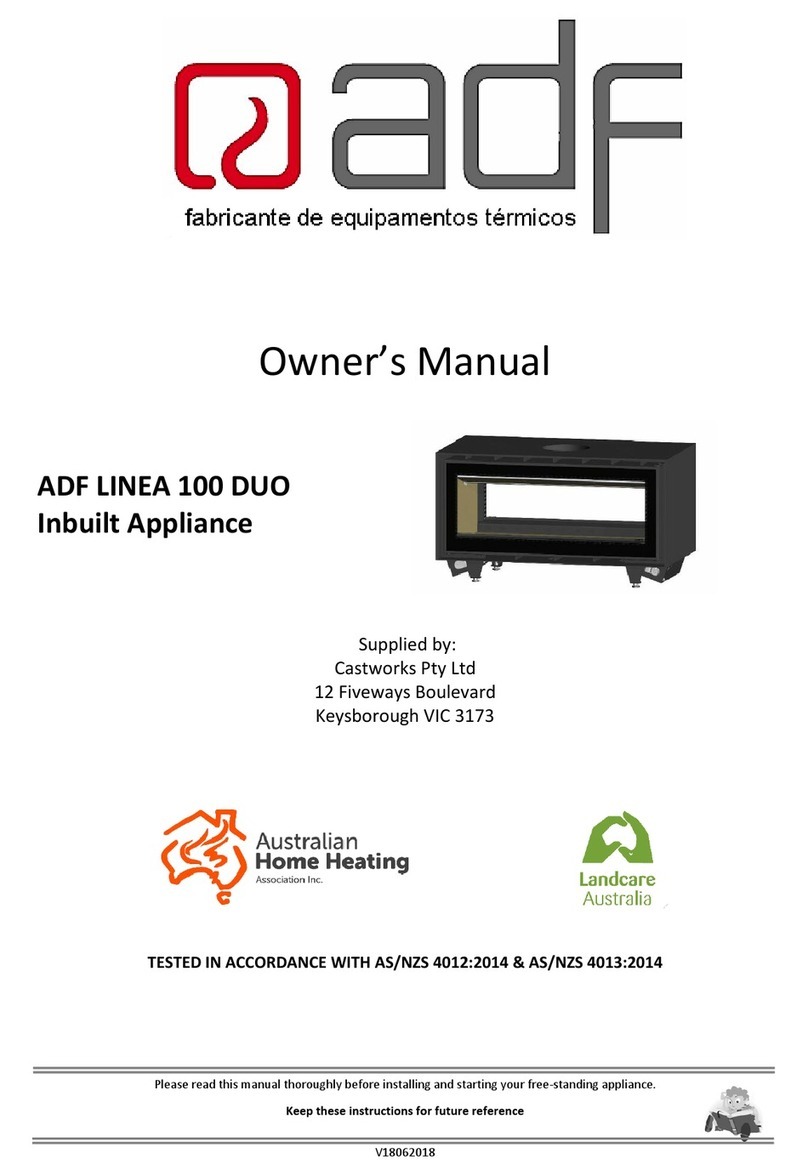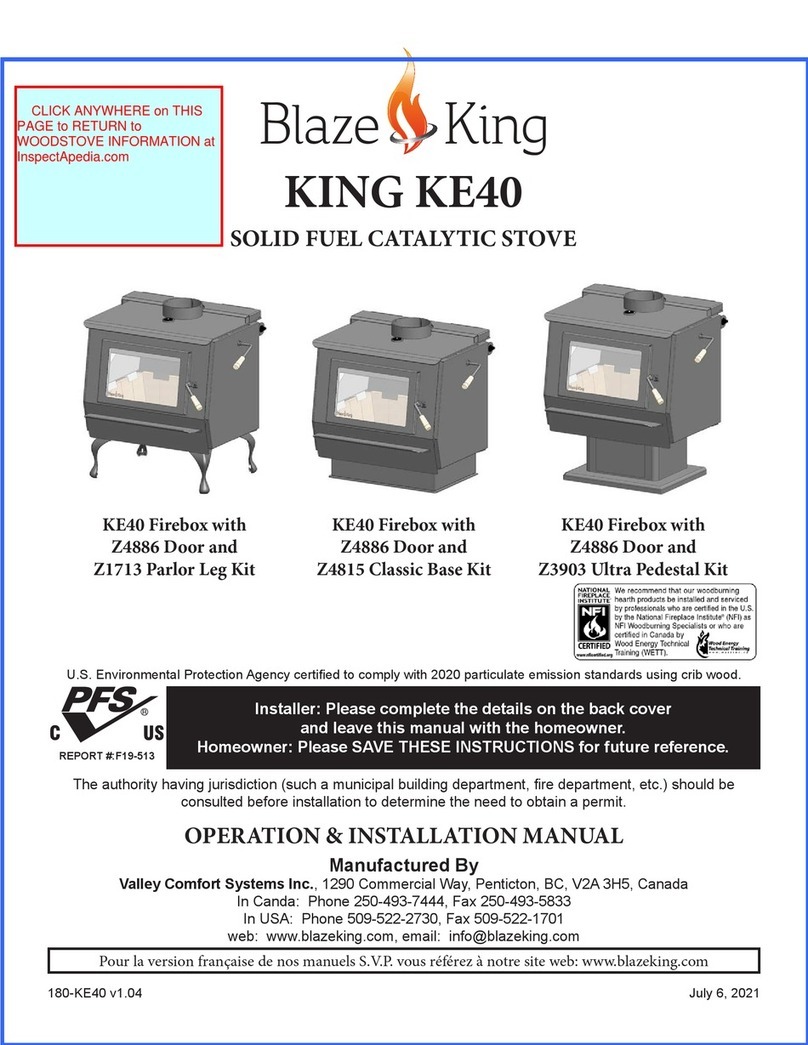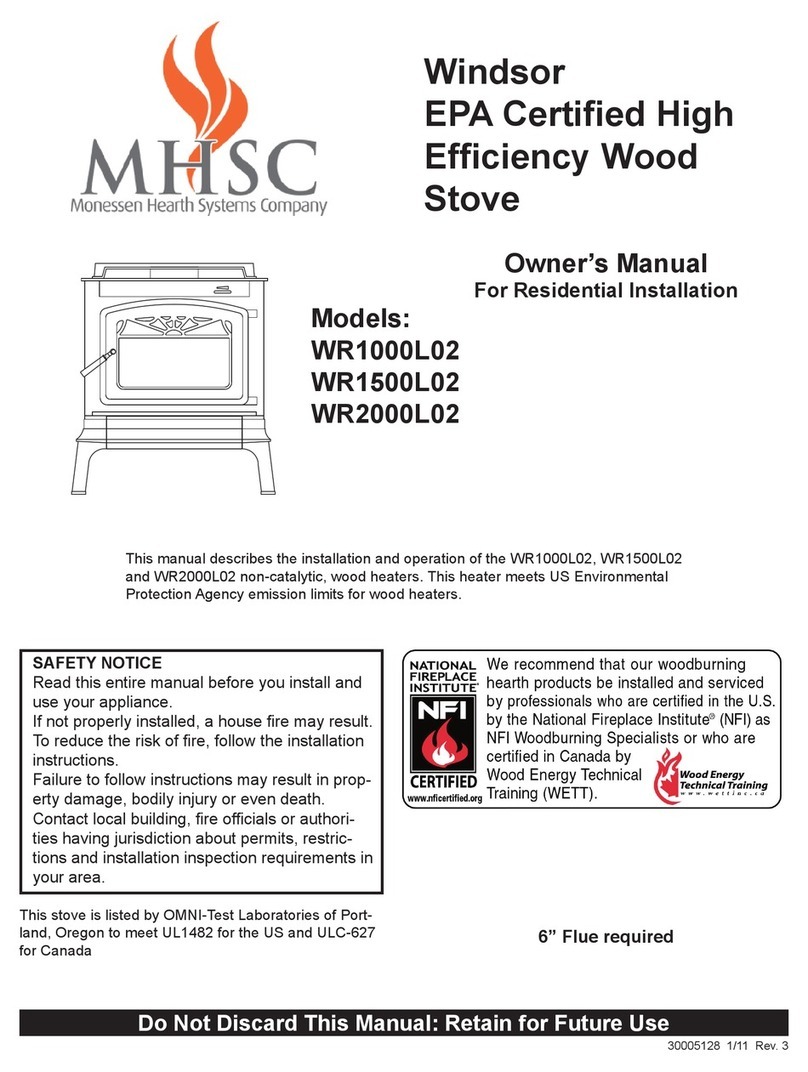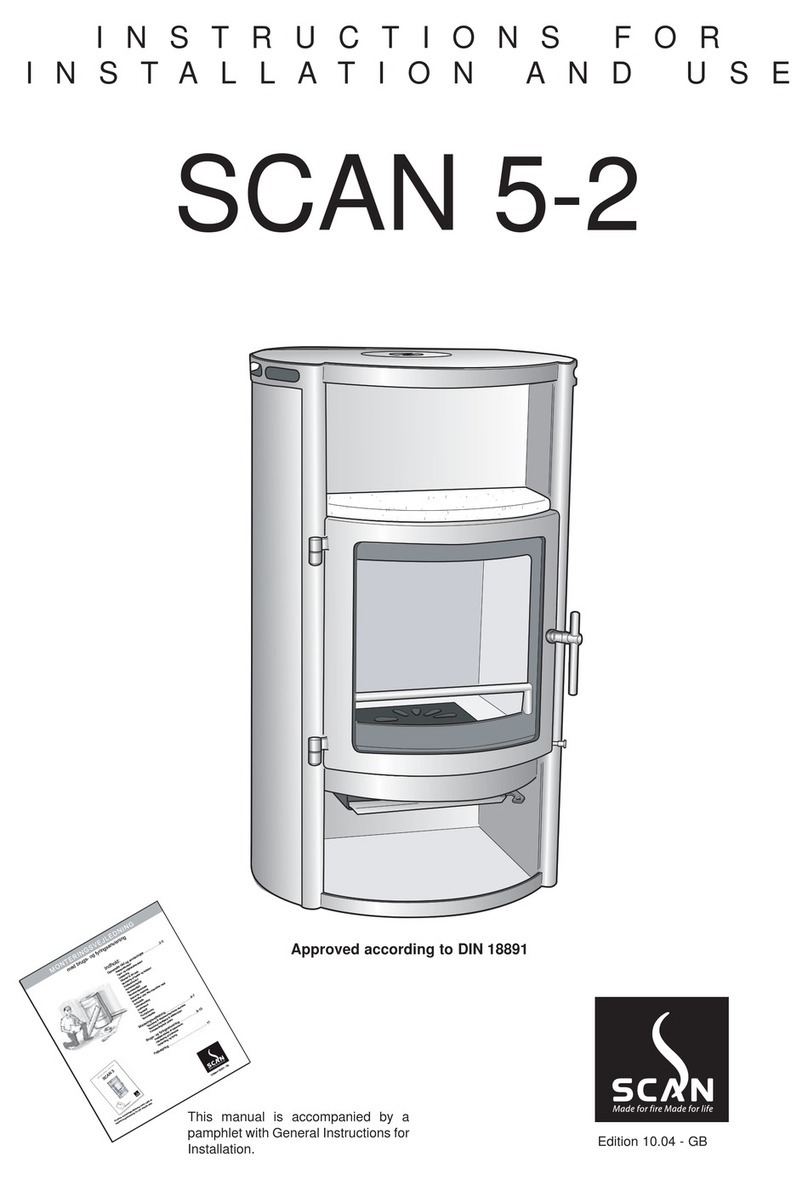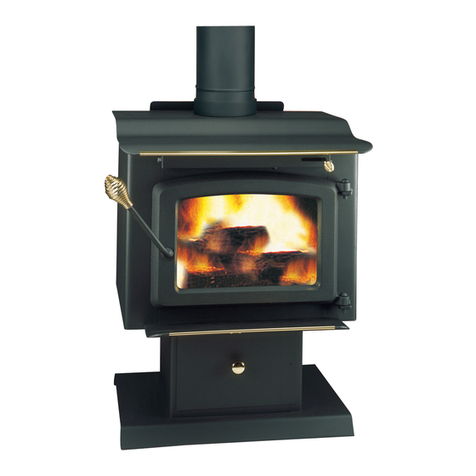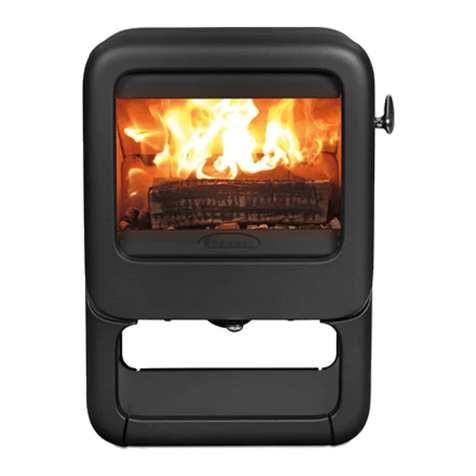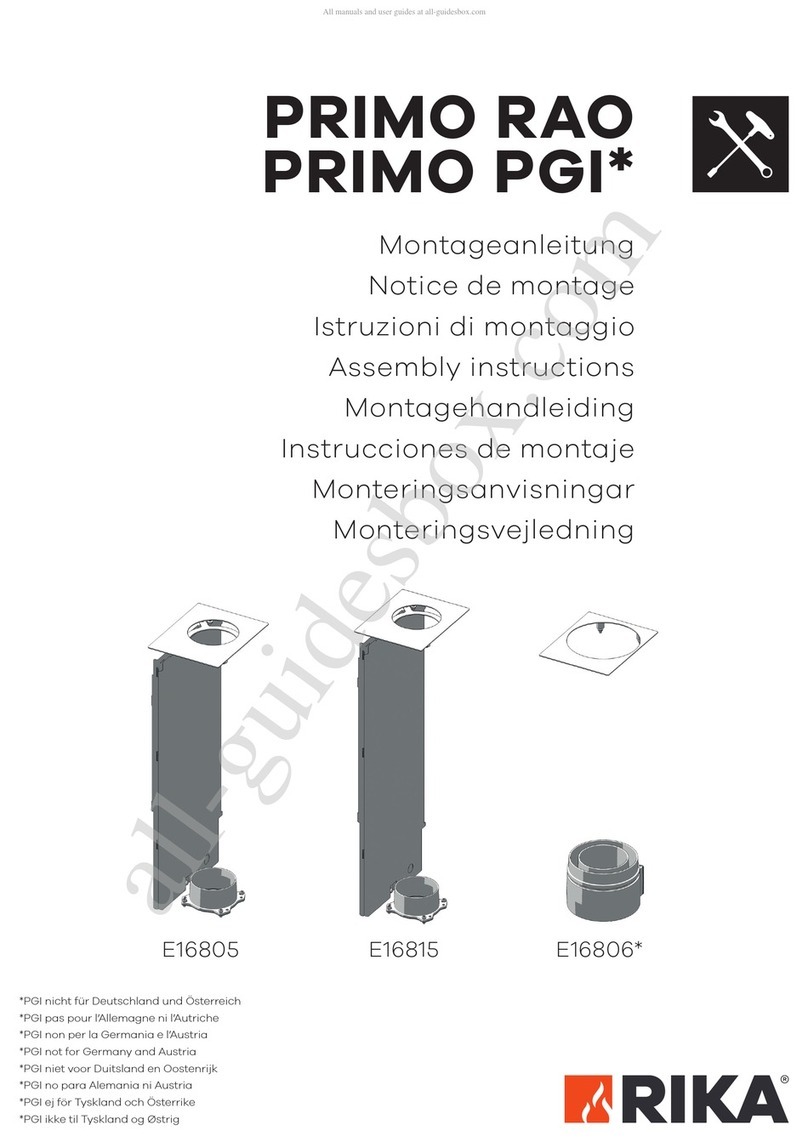ADF NMV Series User manual

Owner’s Manual
NMV / NMR
Inbuilt Appliances
Supplied by:
Castworks Pty Ltd
57 Industrial Drive
Braeside VIC 3195
TESTED IN ACCORDANCE WITH AS/NZS 4013:2014 and AS/NZS 2918.
Please read this manual thoroughly before installing and starting your free-standing appliance.
Keep these instructions for future reference
V12072018

2
Index
1. Introduction 03
2. Appliance Layout 05
3. Technical Specifications 06
4. Installation Instructions 09
Chimney build out Version 10
Cabinetry / Full Wall Build Install / Zero Clearance 15
Ducting 20
Flue Outlet 23
5. Fan 26
6. Instructions for use 28
7. Cleaning and Maintenance 30
8. Troubleshooting 32
9. Warranty 33
CE Marking label with serial number

3
1. Introduction
Congratulations on your purchase of your new ADF woodfire appliance!
Years of extensive research and dedication to innovation and quality, since 1976, has resulted in these
beautifully designed European appliances, constructed to strict Portuguese and European legislation, and
tested and Certified to the Australian Emissions, Efficiency and Safety standard requirements
guaranteeing excellent performance.
Please read this manual fully to ensure safe and efficient use of your heater and to comply with the
warranty guidelines.
Solid Fuel – Ecological Energy
Through photosynthesis, plants capture energy from the sun and transform it into chemical energy. The
trapped energy, eg in the form of wood, pellets, coal are called biomass fuels and can be converted into
various forms: electricity, fuel or heat. Biomass burning causes the release of carbon dioxide into the
atmosphere, but since this compound had previously been absorbed by the plants that originated the
fuel, the CO2 emissions balance is zero, not contributing to the greenhouse effect on the planet.
Firewood is the most environmentally friendly way of producing heat in your home, as it is a fully
renewable resource. The amount of CO2 that is released during the combustion of firewood is not higher
than the amount that would be released from its natural decomposition. Wood ash is a mineral fertilizer
easily absorbed by the environment in a totally ecological way.

4
Firewood – Use
Choosing your wood
All wood types have a different calorific value. You should choose only well-seasoned hard woods.Do
not use logs that are too large.Split round logs so they cannot roll and cause a hazard.
Drying your wood
Whichever firewood is chosen, it must be very dry and seasoned. Unseasoned or green firewood does
not heat as much, because a large part of the energy is consumed in the evaporation of the water and
creosote contained in the wood, which is highly corrosive and will damage the appliance and
consequently it could void your Warranty. In addition, moist firewood produces a large amount of
smoke and little flame, which will foul the appliance, the glass and the chimney. When raining the
stored wood should be covered and well ventilated. Generally, green wood should be left to “season”
for two years.
Wood to Avoid
Softwoods and low-density wood: This kind of firewood release a lot of heat but burn too quickly and
projects embers and resin that foul the chimney and the interior of your woodstove.These should be
used as Kindling only, for starting your fire.
Do not use:
Wood with varnish, exotic wood, treated/painted timber, agglomerates that can produce toxic fumes
which will damage the appliance. Do not use drift wood or coastal wood with high salt content, it will
quickly damage the heater.
All ADF appliances are designed to burn firewood and firewood only, with less than 20% moisture
contect. The use of unseasoned firewood or firewood with moisture or other types of fuel not
recommended will void the warranty.See below, the drier the wood the better heat you get out of it.
0.0
1.0
2.0
3.0
4.0
5.0
6.0
010 20 30 40 50 60 70 80 90
(kWh/kg)
Moisture (%)
Moisture Vs Energy released by firewood

5
2-Appliance Layout
Pos. Designation
1 Door lever, Tool supplied for Door and Air Control
2
Combustion Air control (Use tool):
Open (+) slide to the right
Close (-) slide to the left
3 Vermiculite brick lining
4 Primary convection outlet
5 Secondary convection outlet (hot air distribution for ducting) Inbuilt only
6 Smoke Outlet – Flue collar 200mm (8” Crimped)
7 Convection inlet
Important:
oPlease read this manual thoroughly before installing and starting your free-standing appliance.
oInstallation must be carried out by a licenced and certified installer.
oKeep these instructions for future reference

6
3- Technical Specification
Specifications
TESTED IN ACCORDANCE WITH
AS/NZS 4012:2014 & AS/NZS 4013:2014
Burning Harwood
Unit 820 1000
Maximum Avearge Heat Output kW 9.7 12.5
Overall Average Efficiency % 63 64
Particulate Emission Factor g/kg 0.8 1.2
Maximum firewood load kg 9.7 13.7
Minimum clearance distances from combustible materials mm
See page
10/15.
See Page
10/15.
Flue Diameter mm 200 200
Recommended Fuel
Burn only Harwood
Moisture ≤ 20%
Electrical Specification
W
36
V
220-240
Hz
50/60
Fan Settings
Thermostat Low, Manual High.
Model
Dimensions (mm)
Width Depth Height Weight
ADF820NM-RS Freestanding
with Bench
832 445 860 198
ADF820NM-RS Freestanding
with Bench and Fan
832 445 860 200
ADF820NMV-B Freestanding
with Fan
832 450 565 160
ADF1000NMV-B Freestanding
1012
450
465
172
ADF1000NMV-B Freestanding
with Fan
1012 450 565 174
ADF1000NMV-P
Pedestal Freestanding
1012 450 865 206

7
WARNINGS:
A wood burning heater is, by its nature, an appliance that operates at high temperatures, so it is
necessary to take into account potential risk factors that should be avoided at all costs. Children must
be kept away from any combustion appliance and supervised in the room at all times.
Installation must be carried out by a licenced and certified installer.
The installation must meet the requirements of the manufacturers instructions, AS2918 and the Building
Code of Australia.
The appliance must be installed in such a way as to allow easy maintenance.
Incorrect installation may cause serious damage to the equipment and the safety of people and property.
Before installing your appliance, please ensure the following:
oThe appliance must be installed on a heat resistant surface to 600°C.
oThe floor must be structurally sound, to support the installation weight.
oReplacement outside air must be supplied to the room with the heater, a minimum equivalent to
half the cross-sectional area of the flue, ie 160cm2 free air.
oYour appliance must be non-permanently installed and easily accessible to ensure general
maintenance (chimney and equipment).
oThe appliance must not be cemented in its enclosure under any circumstances.3 – 5mm clearance
is required between the heater outer skin and construction materials, to allow for metal expansion.
Keep these instructions for future reference
WARNINGS:
oREFER TO COMPLIANCE LABEL – DISREGARD ANY CONTRADICTORY FUEL TYPE INFORMATION IN
INSTRUCTION MANUAL
oWARNING: THE APPLIANCE & FLUE SYSTEM SHALL BE INSTALLED IN ACCORDANCE WITH AS/NZS
2918:2001 AND THE APPROPRIATE REQUIREMENTS OF THE RELEVANT BUILDING CODE OR CODES.
oWARNING: APPLIANCES INSTALLED IN ACCORDANCE WITH THIS STANDARD SHALL COMPLY WITH
THE REQUIREMENTS OF AS/NZS 4013:2014 WHERE REQUIRED BY THE REGULATORY AUTHORITY,
I.E. THE APPLIANCE SHALL BE IDENTIFIABLE BY A COMPLIANCE PLATE WITH THE MARKING “TESTED
TO AS/NZS 4013:2014”.
oANY MODIFICATION OF THE APPLIANCE THAT HAS NOT BEEN APPROVED IN WRITING BY THE
TESTING AUTHORITY IS CONSIDERED TO BE IN BREACH OF THE APPROVAL GRANTED FOR
COMPLIANCE WITH AS/NZS 4013:2014.

8
WARNINGS:
oCAUTION: MIXING OF APPLIANCE OR FLUE SYSTEM COMPONENTS FROM DIFFERENT SOURCES OR
MODIFYING THE DIMENSIONAL SPECIFICATION OF COMPONENETS MAY RESULT IN HAZARDOUS
CONDITIONS. WHERE SUCH ACTION IS CONSIDERED, THE MANUFACTURER SHOULD BE
CONSULTED IN THE FIRST INSTANCE.
oCAUTION: CRACKED AND BROKEN COMPONENTS, e.g. GLASS PANELS OR CERAMIC TILES, MAY
RENDER THE INSTALLATION UNSAFE.
oWARNING: ANY MODIFICATION OF THE APPLICANCE THAT HAS NOT BEEN APPROVED IN WRITING
BY THE TESTING AUTHORITY IS CONSIDERED AS BREACHING AS/NZS 4013.
oWARNING: DO NOT USE FLAMMABLE LIQUIDS OR AEROSOLS TO START OR REKINDLE THE FIRE.
oWARNING: DO NOT USE FLAMMABLE LIQUIDS OR AEROSOLS IN THE VICINITY OF THIS APPLIANCE
WHEN IT IS OPERATING.
oWARNING: DO NOT STORE FUEL WITHIN THE HEATER INSTALLATION CLEARANCES.
oWARNING: WHEN OPERATING THIS APPLIANCE AS AN OPEN FIRE USE A FIRE SCREEN.
oWARNING: OPEN AIR CONTROL (AND DAMPER WHEN FITTED) BEFORE OPENING FIRING DOOR.
oCAUTION: THIS APPLIANCE SHOULD NOT BE OPERATED WITH A CRACKED GLASS.
oTHIS APPLIANCE SHOULD BE MAINTAINED AND OPERATED AT ALL TIMES IN ACCORDANCE WITH
THESE INSTRUCTIONS.
oTHE USE OF SOME TYPES OF PRESERVATIVE-TREATED WOOD AS A FUEL CAN BE HAZARDOUS.
oTHE APPLIANCE OR FLUE SYSTEM SHOULD NOT BE MODIFIED IN ANY WAY WITHOUT THE WRITTEN
APPROVAL OF THE MANUFACTURER.
oBURN ONLY HARDWOOD
oPrior to installation check with your state and local authorities regarding any specific regulations that
may apply.
All local regulations, including those referring to national standards, must be observed
when installing the appliance.

9
4-Installation Instructions
The floor must be structurally sound.
The Hearth must have a heat resistant surface to 600°C, with an insulating thickness of
non-combustible material equivalent to 24mm of cement sheet with thermal conductivity
of 0.1m2.K/W per 9mm. eg 24mm Bellis Board or equivalent.
Dimensions required in front of the heater are shown in the Elevation drawings below.
The hearth must be included beneath the heater (eg 40mm Skamotec).
Heater with Fan option.
If the heater is supplied with legs to protect the Fan during transit; lay the heater on its back, to remove
the legs. The heater can then be carefully put into position. The Heater will need to be inserted into the
chimney build out before the construction is completed.
The Installations can be included into a Masonry installation, built as a default non-combustible chimney
opening meeting the requirements for the National Construction Code or the Building Code of Australia.
The tested installation is built into Skamotec 225. This can be done in 2 ways:
1. Chimney Build Out version (no combustibles within 50mm of each side wall, or
2. Cabinetry version; if Combustible materials will be built alongside the installation. This version
includes as extra side cavity with 50mm clearance each side. See below.
Note:
An Optional Kit form is available for the Chimney Build Out version.

10
1.Chimney Build Out Install:
The build out is constructed with Skamotec 225 40mm sheets to Skamotec specifications, the
Installation and Clearance specifications are included in the Elevation drawings shown below:

11
The parts list required for the build out is shown

12
The construction of the base includes 5 pillars and a base to support the heater, leaving cut out for the
fan to drop into. The bench cut out is 560mm x 230mm from the rear of the base.
The assembly includes a 30mm air gap behind the rear sheet to combustible material. Use Skamotec
off cuts to space out from the wall. The side walls continue to the rear wall, enclosing the gap.
The minimum Ventilation area must be included below the base of the heater and below the cap ( 9
and 10). The ventilation can be included in the front to the dimensions at L or on the sides, shown as
Q. The same total vent area is included below the base of the firebox, and at the top below the ceiling
cap height of the chimney chase, in either case.
STEP 1. STEP 2.

13
STEP 3. STEP 4.

14
STEP 5. STEP 6.

15
Cabinetry / Full Wall Build Install:
Allows combustible materials to be built up to the side of the enclosure.
The build out is constructed with Skamotec 225 40mm sheets to Skamotec specifications, the
Installation and Clearance specifications are included in the Elevation drawings shown below:

16
The parts required for the build out is shown below:

17
The construction of the base includes 5 pillars and a base to support the heater, leaving cut out for the
heater fan to drop into. The bench cut out is 560mm x 230mm from the rear of the base.
The assembly includes a 30mm air gap behind the rear sheet to combustible material. Use Skamotec
off cuts to space out from the wall.
STEP 1. STEP 2

18
The minimum Ventilation area must be included below the base of the heater and below the cap ( 9
and 10). The ventilation is shown in the front as the dimensions at L. If an alternative ventilation
position is required, ample free air flow must have access to the ventilation from outside the cavity.
The total vent area must be included below the base of the firebox, and at the top below the ceiling cap
height of the chimney chase.
STEP 3. STEP 4.

19
STEP 5. STEP 6.

20
Ducting – Convection Air Transfer Ducting
For the inbuilt models, Ducting can be added to the top of the firebox and transferred to vents either
on side of the Chimney breast via natural convection, or via an air transfer kit with fan to other rooms
(From other supplier). The blanking plates can be opened as below, to direct the convection heat into
the duct, which will also be forced via the heater fan (if fitted).
This manual suits for next models
5
Table of contents
Other ADF Wood Stove manuals
Popular Wood Stove manuals by other brands
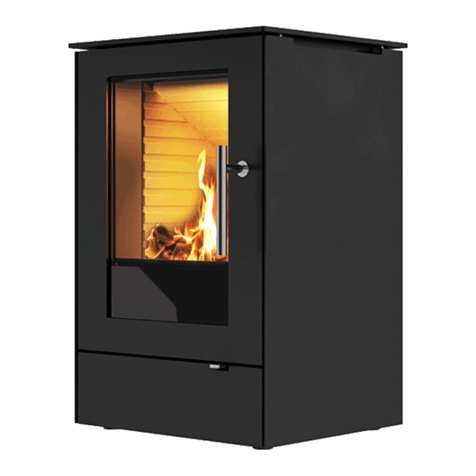
RAIS
RAIS Q-Tee series user manual
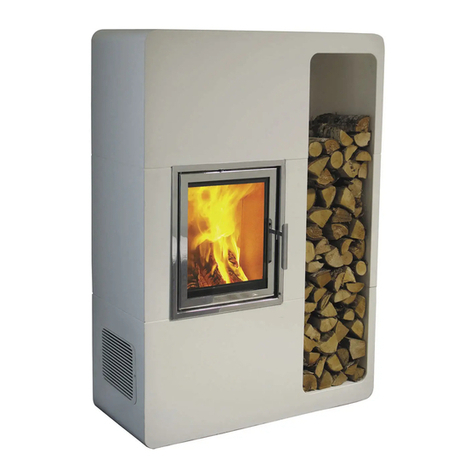
Nordpeis
Nordpeis Palma installation manual
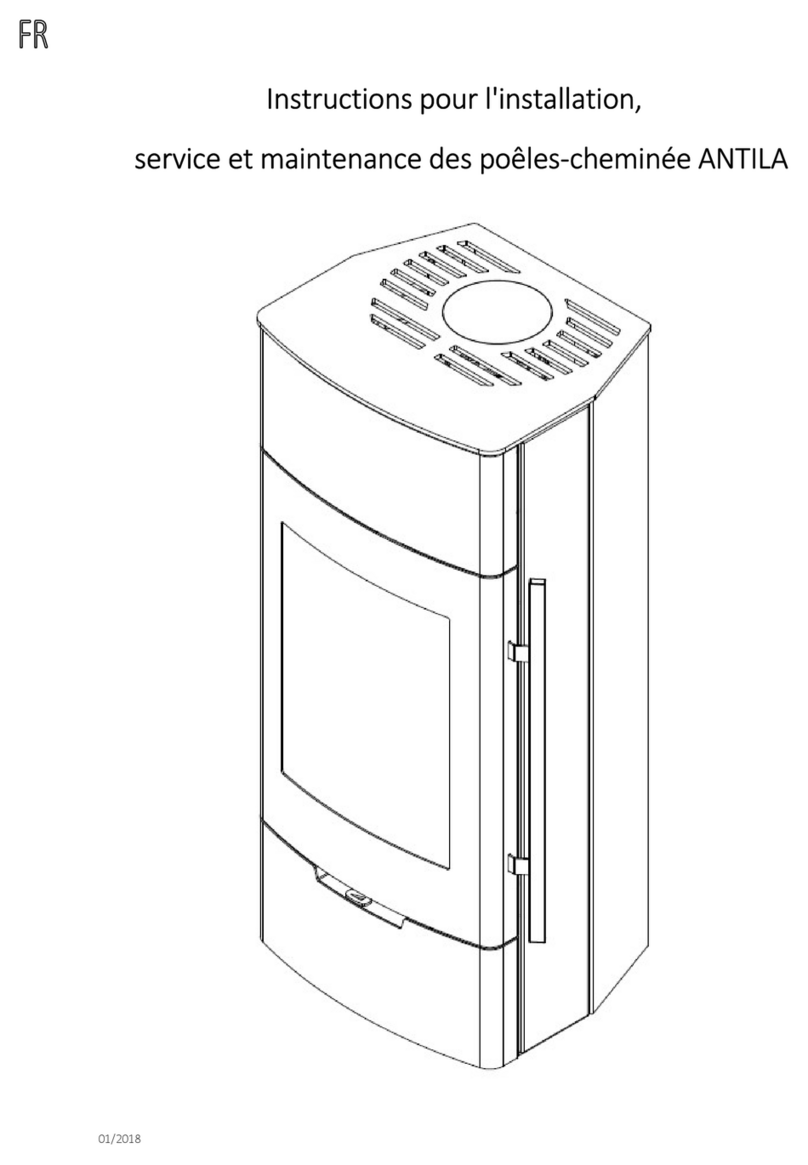
Burning Technology
Burning Technology ANTILA Instructions for installation, use and maintenance
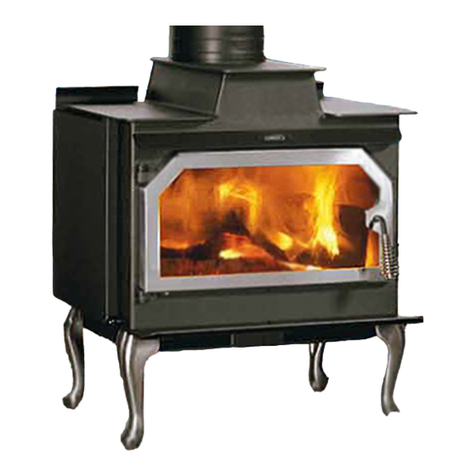
Lennox
Lennox Legacy S260 T-Top Installation and operation manual
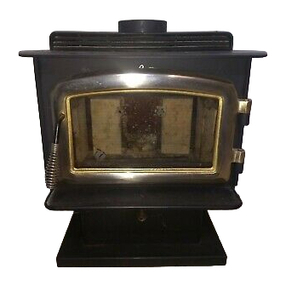
Regency
Regency R3 installation manual

SCAN
SCAN Basic1 Instructions for installation and use
